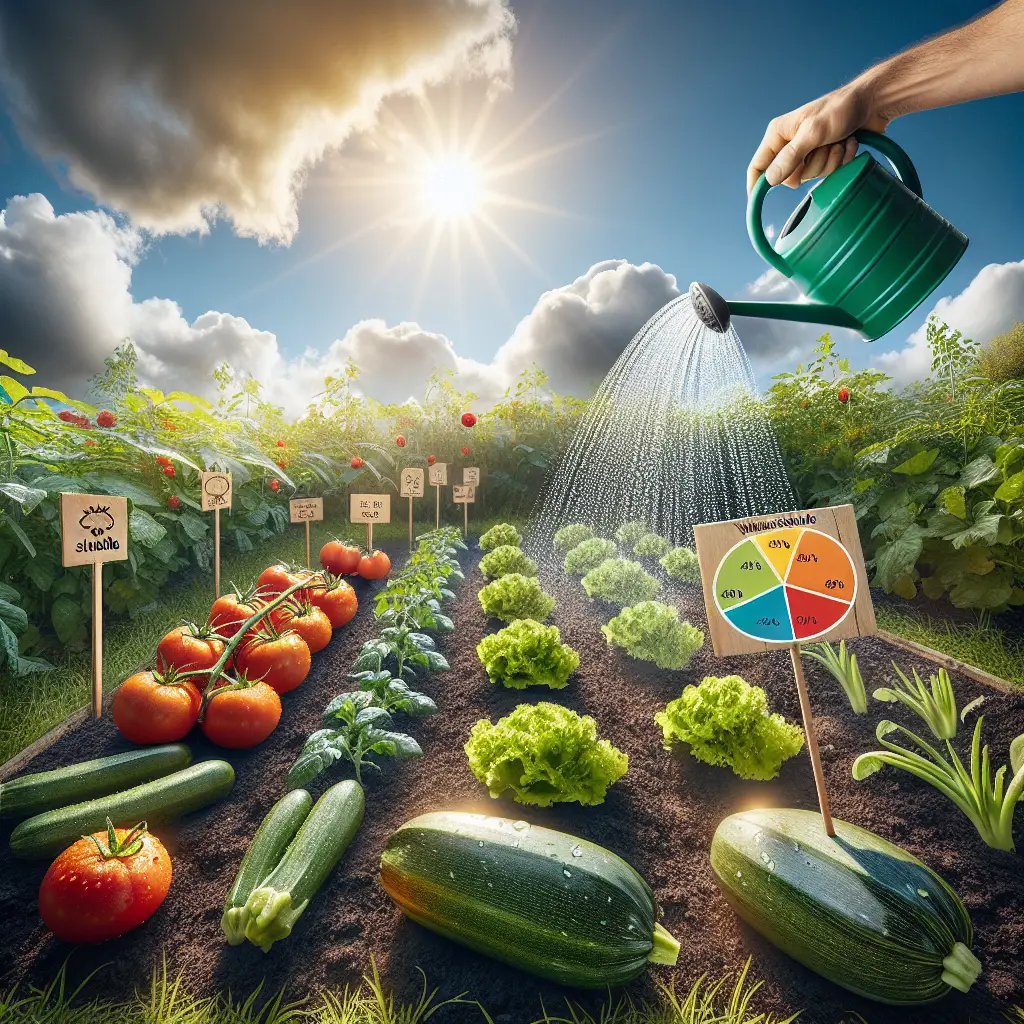Title: How Often To Water A Vegetable Garden
Introduction:
Whether you are a seasoned gardener or a green-thumbed novice, the question of how often to water a vegetable garden is fundamental to your horticultural success. After all, water is as vital to plants as it is to all living organisms. But with varying advice and myths circling around, it’s crucial to understand the balance needed to sustain a thriving vegetable patch. Today’s article will delve deep into the nectar of gardening wisdom, providing clear guidelines and strategies for optimum plant hydration. Let’s grow a lusher, more productive garden together!
Understanding Your Vegetable Garden’s Water Needs:
Vegetables, like people, require a steady supply of water to flourish. However, ‘overwatering’ and ‘underwatering’ have been the downfalls of many gardens (Gardener’s Supply Company). The key to successful watering lies in comprehension of soil type, weather conditions, and the particular needs of your vegetables. Sandy soils drain quickly and might necessitate more frequent watering, while clay soil retains moisture longer.
Also, consider the local climate and season. Hotter, drier climates will naturally sap soil moisture faster, whereas cooler, cloudier weather reduces the need for the watering can. Investing in a simple tool like a soil moisture meter can be immensely helpful in taking the guesswork out of the equation.
The Wisest Watering Techniques:
It’s not just ‘how often’ but also ‘how’ you water that matters. Deep watering, for instance, encourages deeper root growth and thus a sturdier and more drought-resistant plant. A drip irrigation system (Rain Bird Drip Irrigation Systems) can be an excellent investment for your garden as it delivers water directly to the plant roots, reducing waste and preventing the spread of leaf diseases.
Watering early in the morning is generally best, as it allows the water to reach the roots before the sun can evaporate it and also helps protect against fungal diseases that can thrive in the constant moisture of night watering. A comprehensive guide by the University of Georgia Extension offers valuable insights into tailored vegetable garden care.
Frequency Factors:
As a rule of thumb, an inch of water per week is what most vegetable gardens require, whether through rainfall or manual watering. Nevertheless, this can vary dramatically based on the aforementioned factors: soil, climate, and plant stage of development. For instance, when plants are flowering and fruiting, their thirst may increase.
Young seedlings and tightly packed plants in raised beds might demand a bit of extra hydration due to their limited root systems and potentially quicker soil drying. Keeping records of your garden’s watering routine and observing plant responses over time can be invaluable for honing in on the ideal irrigation schedule for your unique garden patch.
Mulch Magic:
Incorporating mulch into your watering strategy is like a charm spell for moisture maintenance. A layer of organic mulch, such as straw or wood chips, can reduce water evaporation from the soil surface, regulate soil temperature, and suppress weed growth. Be cautious not to heap it directly against plant stems to prevent rot. The University of California’s Master Gardener Program has a trove of information on mulching techniques suitable for vegetable gardens.
Specific Vegetable Guidelines:
While general rules are helpful, each vegetable has its unique personality. Peruse the care instructions for your specific vegetable varieties. For example, leafy vegetables may prefer more frequent watering to sustain tender, juicy leaves, while root vegetables like carrots and potatoes can endure slightly drier conditions.
Conclusion:
Watering a vegetable garden is an art and a science, demanding attention, patience, and a willingness to learn from the landscape. Attune your senses to the needs of your plants, invest in the right tools, and be adaptable with the ever-changing weather patterns. By incorporating deep-water techniques, investing in an efficient irrigation system, mulching, and responding to the specific needs of your vegetables, you will ensure a bountiful and vibrant garden. Remember, the perfect balance of watering is out there, often lying just beneath the surface of your own backyard soil.
Now that your thirst for knowledge on watering practices has been quenched, it’s time to put theory into practice. Go forth and cultivate not just vegetables, but a verdant sanctuary of nourishment and peace. Happy gardening!


